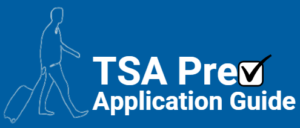the Redress Number on Global Entry card
the Redress Number: A Guide for Global Entry Members
Have you ever received a strange seven-digit number printed on your Global Entry card and wondered, “What is a redress number, and do I need one?” You’re not alone! Many Global Entry members encounter this mysterious identifier and may not fully understand its purpose.
So, let’s delve into the world of redress numbers and shed light on this intriguing aspect of your trusted traveler program.
What is a Redress Number?
A redress number, officially known as a Redress Control Number, is a unique identifier assigned by the Department of Homeland Security (DHS) to individuals who have previously experienced difficulties during airport security screenings or border crossings due to mistaken identity or inclusion on watch lists.
Think of it as a flag in the system that helps CBP officers quickly recognize your situation and avoid unnecessary delays or screenings.
Do you need a redress number?
Not all Global Entry members have redress numbers. You’ll only receive one if you encountered issues during previous travel due to:
- Incorrect identification: Mistakenly flagged as someone else on a watch list.
- Screening problems: Delayed or subjected to additional security checks due to name similarities or other factors.
- Denial of boarding: Unable to board a flight due to mistaken identity or watch list issues.
If you haven’t faced any such difficulties, your Global Entry card won’t display a redress number.
Where to find your redress number:
If you do have a redress number, it will be printed directly on your Global Entry card (usually in the upper right corner or near the barcode).
Benefits of having a redress number:
While not everyone needs a redress number, it can offer several advantages:
- Expedited processing: When entering the U.S., providing your redress number allows CBP officers to quickly access your case history and potentially streamline your clearance process.
- Reduced delays: The number helps differentiate you from others with similar names or travel patterns who may be flagged on watch lists, potentially minimizing unnecessary screenings.
- Peace of mind: Knowing your information is readily available to CBP officers can offer a sense of reassurance and potentially reduce travel anxiety.
What to do if you don’t have a redress number:
Even without a redress number, you can still enjoy the benefits of Global Entry, including expedited customs clearance and TSA PreCheck®. Simply present your Global Entry card and passport during travel.
Important points to remember:
- A redress number is not a guarantee of faster processing or avoidance of all screenings.
- You are not required to provide your redress number when booking flights or traveling.
- The DHS offers support through the TRIP (Traveler Redress Inquiry Program) website or hotline if you have questions or concerns about your redress number or travel history.
Conclusion:
The redress number might appear mysterious at first, but it’s simply a tool designed to enhance your smooth travel experience as a Global Entry member. Understanding its purpose and knowing where to find it can provide peace of mind and potentially expedite your airport encounters. Remember, if you don’t have a redress number, it doesn’t affect your Global Entry benefits – simply enjoy the convenience of expedited travel!
I hope this detailed explanation has demystified the redress number and its role in your Global Entry journey. Safe and smooth travels!
Additional Resources:
- DHS TRIP website: https://www.dhs.gov/dhs-trip
- DHS TRIP hotline: 1-877-831-4158
- CBP Global Entry website: https://www.cbp.gov/travel/trusted-traveler-programs/global-entry

